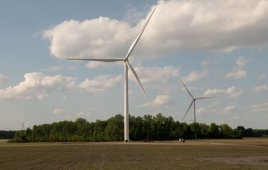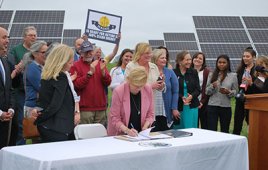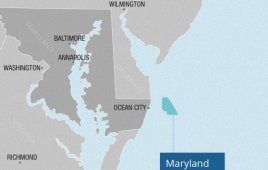Canada generates almost two-thirds of its electricity from renewable sources according to a new report released by the National Energy Board (NEB).
Hydro is the dominant source of electricity in Canada accounting for 55% of total installed capacity and 58% of its generation. Four provinces and one territory – British Columbia, Manitoba, Quebec, Newfoundland & Labrador and Yukon derive more than 85% of their power from hydro.
Non-hydro renewable power capacity experienced significant growth across Canada in the past decade. Wind capacity increased 20 times and solar capacity increased 125 times. Despite the growth, the combined capacity of wind, solar and biomass was just 11% of total Canadian capacity in 2015. As solar and wind produce power intermittently, non-hydro renewables accounted for just seven per cent of total Canadian generation.
A total of 11% of Canada’s greenhouse gas emissions (GHGs) come from the electricity sector. From 2000 to 2014, emissions from electricity generation declined 40 per cent due primarily to the phase-out of coal in Ontario and GHG-reduction initiatives in Nova Scotia and New Brunswick.
Further growth in renewable power faces challenges such as cost concerns, local opposition, low growth in electricity demand, and the long operating life of existing facilities.
Quick facts:
- In the hydro-rich areas of Yukon, British Columbia, Manitoba, Quebec and Newfoundland & Labrador, more than 90% of electricity comes from renewables.
- Between 2005-15, Ontario’s share of renewable power production rose from 23 to 34% while Nova Scotia’s doubled from 12 to 24%.
- In 2005, non-hydro renewables comprised just 2% of total Canadian power capacity. By 2015 that number had grown to 11%.
- Canada’s annual GHG emissions from the power sector declined 40% from 2010-14.
- Ontario leads Canada in wind power capacity of more than 4,000 MW and solar capacity of more than 2,000 MW.
- NWT now uses liquefied natural gas (LNG) to fuel one of its power plants. LNG reduces GHG emissions by about 25% compared to diesel.
- Alberta’s generation from renewables increased 66% from 2005 to 2015.
- By 2030, Saskatchewan plans to achieve 50% of its power capacity from renewable sources.
“Canada’s wind and solar power capacity has increased dramatically in the past decade due to the support of various policies and programs. The country now ranks second in the world in hydro power generation and fourth in the world in renewable generation,” said Shelley Milutinovic, Chief Economist, National Energy Board.
For more: Canada’s Renewable Power Landscape
The National Energy Board is an independent federal regulator of several parts of Canada’s energy industry with the safety of Canadians and protection of the environment as its top priority. Its purpose is to regulate pipelines, energy development and trade in the Canadian public interest. For more information on the NEB and its mandate, visit www.neb-one.gc.ca.
Filed Under: Uncategorized





